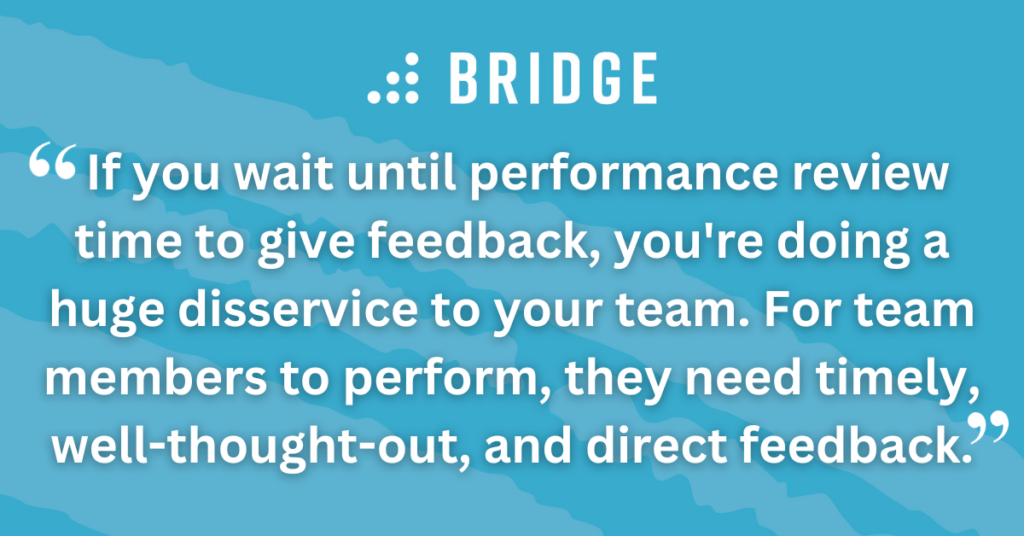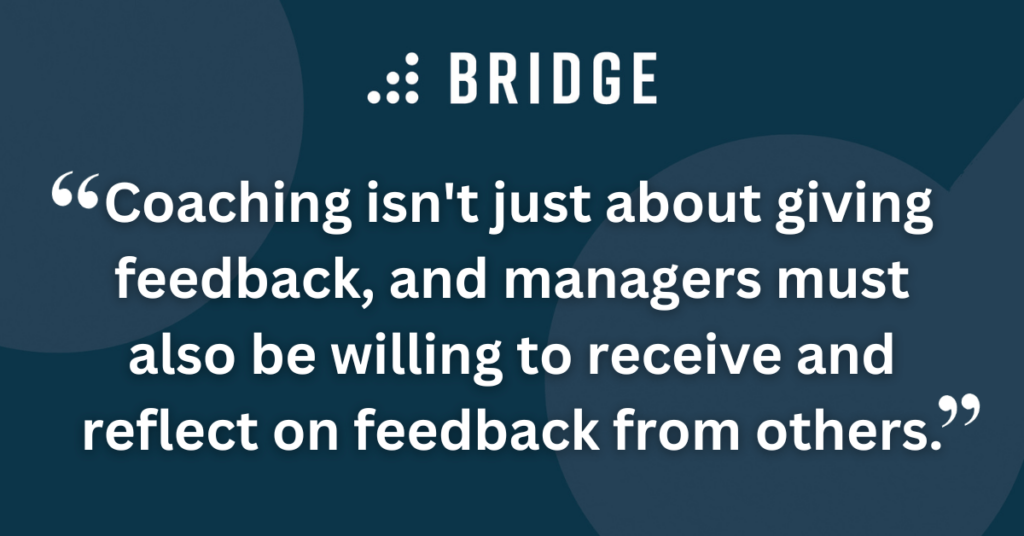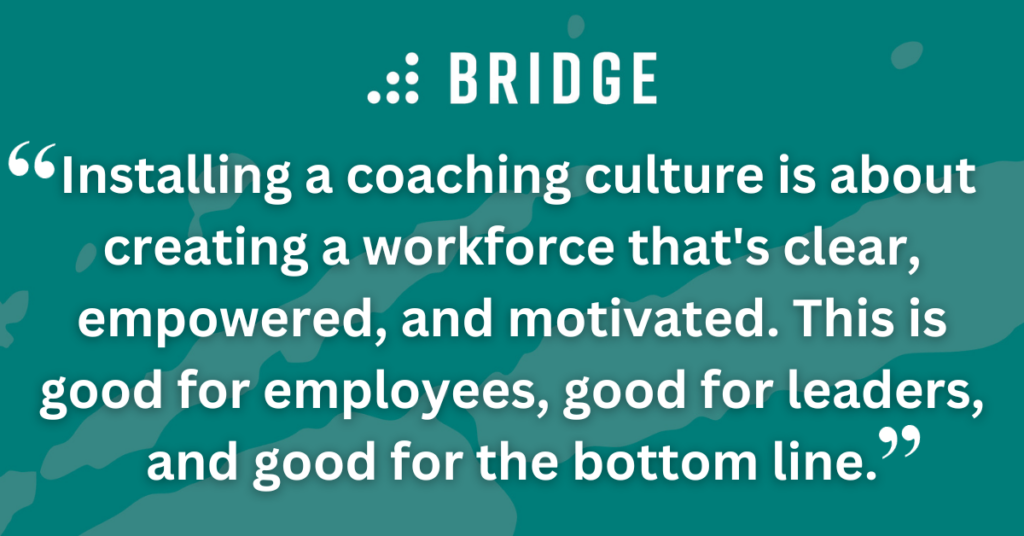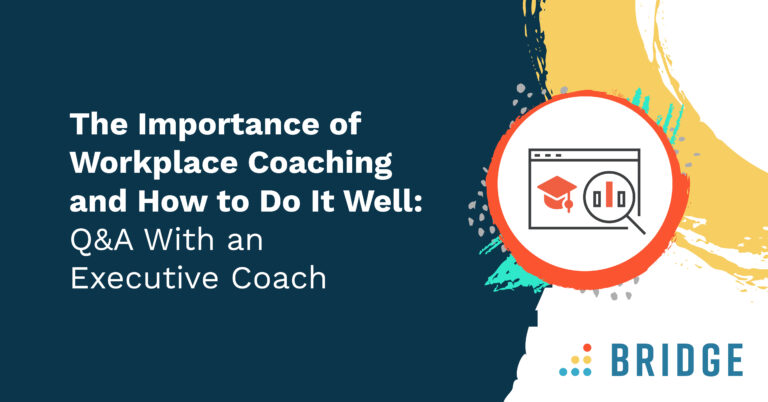Adopting workplace coaching as a component of your L&D strategy is a fast track to building high-performing teams.
For executive coach and business consultant Bridgette Boudreau, courageous conversation, direct and clear mentorship, and building trust and psychological safety are some of the essential coaching elements for organizational success.
We spoke to Bridgette about the core principles organizations can adopt to create strategic alignment and elevate performance.
Keep reading to learn the importance of workplace coaching and explore her best practices for building and scaling a growth-centric culture.
So, Bridgette, How Did You Develop Your Approach to Coaching?
My approach to workplace coaching was derived from both the positive and negative experiences I had in my various corporate roles as both a leader and team member.
One of my first mentors made a huge impact on my personal and career development. When the internet first came online in the early 2000s, I had to get in on the action. I was hired at a local outdoor retailer as their first email marketing manager. I had no experience because digital marketing was brand new in those days, so I had to learn on the job along with everyone else. It was the Wild West!
I remember my boss taking me under her wing and showing me how to build forecasts in Excel, develop email campaigns, and, most importantly, present well and navigate tricky corporate dynamics.
My boss didn't coddle me. She respected my intelligence and was clear about what she wanted and expected. When I didn't know how to do something or was unsure, she showed me and then assured me that I could figure it out from there.
On the flip side, I've had some terrible bosses who belittled, berated, and tried to extract performance through intimidation and control. That experience taught me what not to do.

What Does a Coaching Framework Look Like for Organizations?
The benefits of a coaching approach are well-documented for improving overall organizational performance and increasing employee satisfaction and retention. Coaching builds trust and psychological safety along with clearer expectations, which leads to better outcomes. There are three pillars I teach leaders who want to use a coaching approach to support their teams in these areas.
The first pillar is teaching and mentoring versus command and control or doing it yourself. When I dig into persistent employee issues with my clients, many times, the culprit is a lack of training and mentorship. Leaders are expecting employees to show up to the job knowing how to do all tasks and think strategically.
Many times, the truth is that employees don’t know how to do the task in the expected way. They must be taught. So, part of a coaching approach is taking the time to teach them how to do the task and mentoring them through it. Leaders often fall into the trap of taking over a project and doing it themselves when they don't see the desired results. Or, they keep making the same directives despite not receiving the desired outcomes.
Taking a coaching approach means finding out if the employee actually has the knowledge and skills necessary to do the task and, if not, taking the time to teach them.
That leads me to the second pillar: curiosity and responsiveness versus judgment and reactivity. It's aggravating when things don't go smoothly on your team or when employees aren't doing what you want them to!
It's easy to fall into judgment and reactivity in an attempt to quickly resolve the issue. This can look like making a snap judgment about the situation and firing off a terse email to get it off your plate. You may have noticed this often doesn't resolve the issue but causes more confusion.
Instead, take a moment to step away and manage your emotions rather than firing off that Slack message. Shift into curiosity about what's going on. Instead of dictating what needs to happen, ask "why?" There's a tendency not to ask why events have occurred. Instead, people make assumptions about “why?” or immediately move to problem-solving without clearly identifying the core issue.
By asking “why?” and responding instead of reacting, you'll get new insights from your team members that will lead you to solve the core problem rather than cycling through the same symptoms repeatedly.
The third pillar is giving in-the-moment feedback. The "feedback sandwich" is out, and direct feedback delivered with kindness is in. If you wait until performance review time to give feedback, you're doing a huge disservice to your team. For team members to perform, they need timely, well-thought-out, and direct feedback.
LEARN MORE | ‘How to Create an Employee Training Program In Ten Steps’

What Does Effective Feedback Look Like?
One of the primary things I say to people when talking about receiving feedback is that it's about something you're doing, not who you are, so you have to separate those two. When managers give corrective feedback, being direct is a kindness for both the giver and the receiver.
Many of us aren't taught how to be direct in the workplace, or we fear we'll be punished if we're too direct. Coaching can create those fundamental feedback loops and help people overcome fears of conflict. With these skills, you can help people become more comfortable and teach them to act as guides to their teams, peers, and managers. You want people to feel safe to try new things or admit when they don't understand something and to know if they make a mistake, they'll get feedback and support in doing better.
Being willing to give courageous feedback in the moment and have difficult conversations is how issues get resolved at the root, so you're not having the same conversation a year later. But coaching isn't just about giving feedback, and managers must also be willing to receive and reflect on feedback from others.
Here are a couple of quick tips I'd recommend managers take into consideration when giving employees actionable feedback:
Firstly, prepare. Come up with one to three bullet points before the conversation. What are the most important points you want to convey to the person? If you aren't prepared, delay the conversation until you can distill your feedback.
Next, share your feedback. Don't pile on. Stick to the facts. Then, ask the person why they think the issue happened. What are their ideas for improvement? What do they need from you?
Finally, summarize. At the end of the conversation—or later, if the person needs time to think about it—ask them to summarize the discussion and the corrective actions they'll take going forward.
And be sure to catch them doing things right!
MORE ABOUT FEEDBACK | ‘Continuous Feedback: The Key to the Best Performance Reviews’
How Can Organizations Make Communication and Feedback Habitual?
The mistake many organizations make is that they believe improving communication and installing proper feedback loops is solely a learning and development initiative. What's required to make it stick is cultural change.
Want to make communication and feedback habitual? Install a culture that values, talks about, reinforces, and measures the quality of communication. It has to be woven into the fabric of the culture to truly work.

Can Organizations Measure the Impact of Coaching?
Yes!
Quantitatively, you can measure productivity, employee satisfaction, performance improvement, and any other relevant KPIs. You can test by installing a coaching culture within a team or department, then measure their results against their previous benchmarks and against other divisions within the company.
Qualitatively, are people happier? Is there less spin and more innovation? Do people have more clarity and feel more empowered? Is there a general feeling of flow versus stagnancy?
Most importantly, are you winning? At the end of the day, installing a coaching culture is about creating a workforce that's clear, empowered, and motivated. This is good for employees, good for leaders, and good for the bottom line.
RELATED READING | ‘Learning Analytics: 4 Essential Metrics and Strategies for L&D Success’
Transform Your Organization Through Coaching
Reach out to Bridgette Boudreau directly to learn more about transforming your organization through coaching.
Don't forget to download our latest ebook, "How to Empower Your Managers to Be Coaches," to learn more about building a positive workplace culture.





